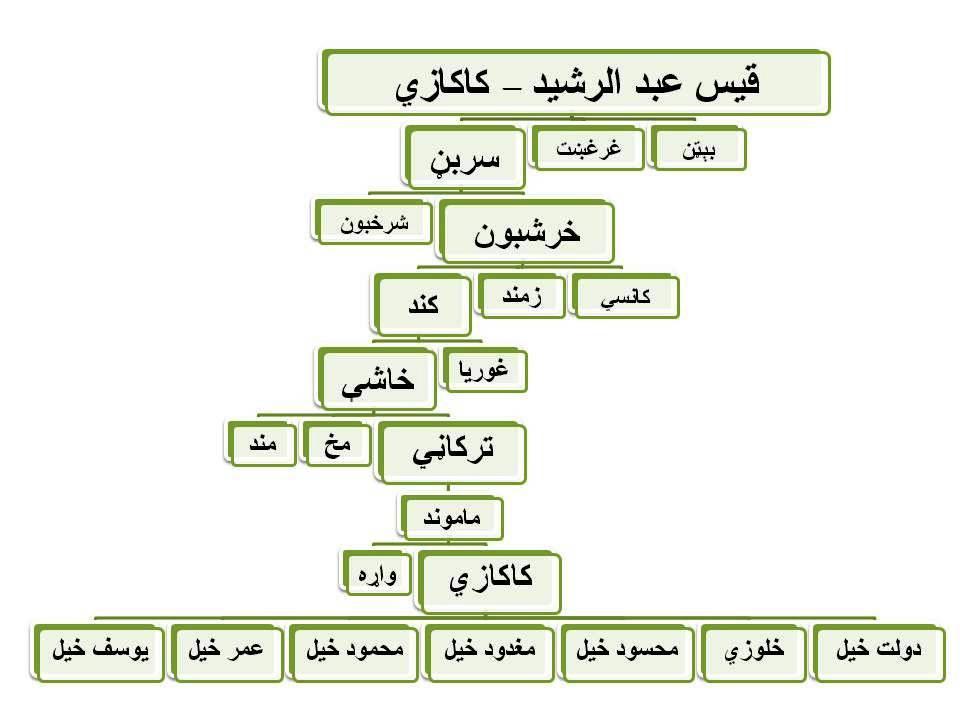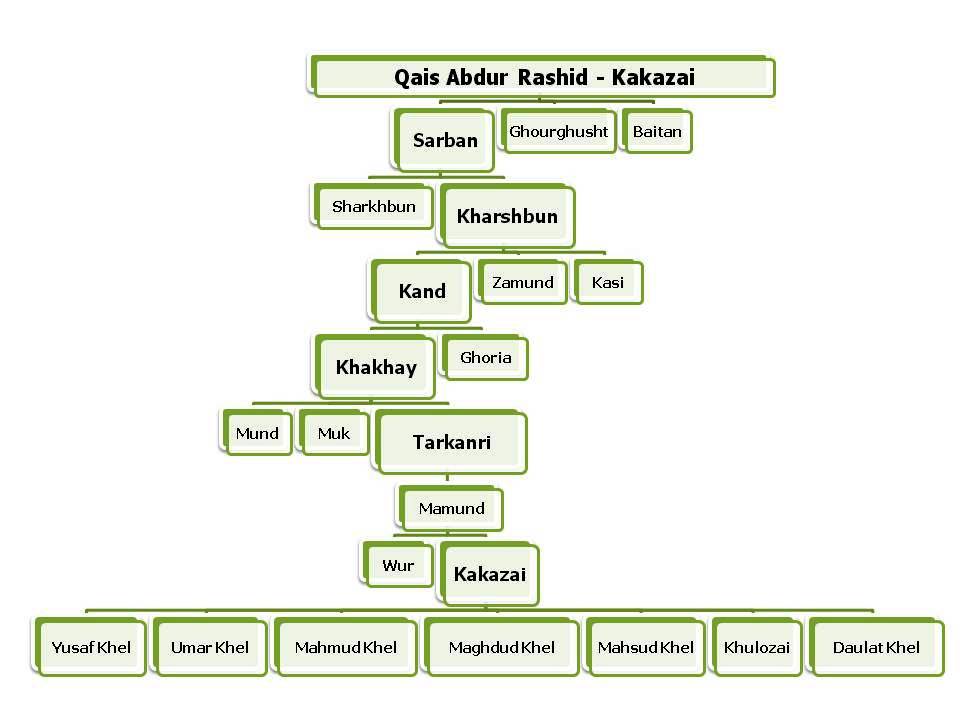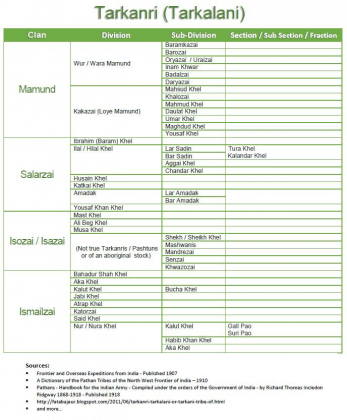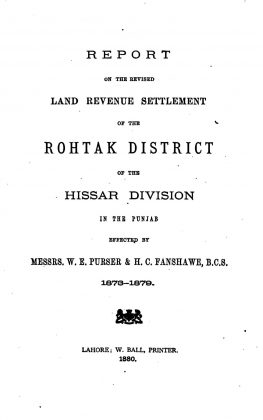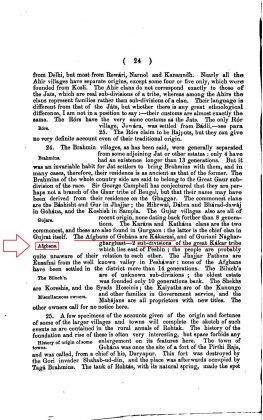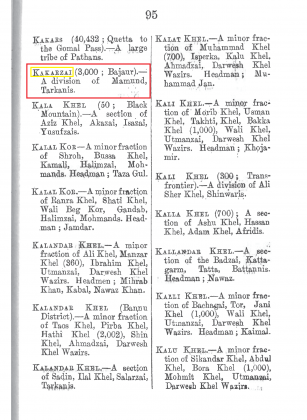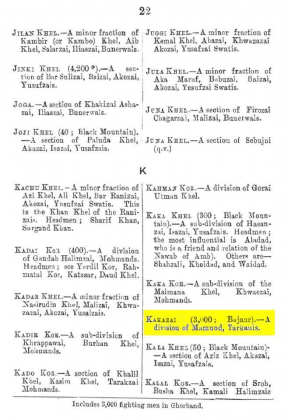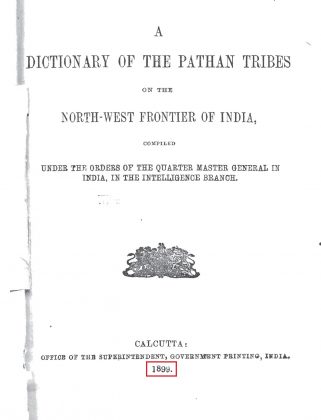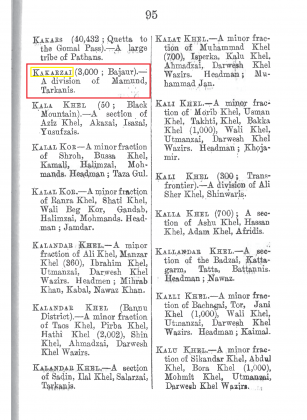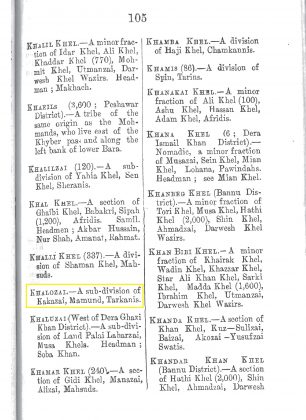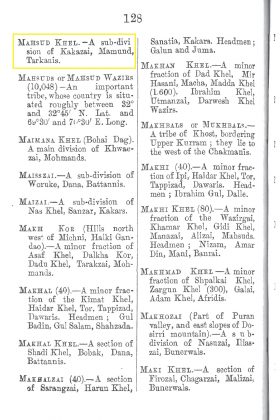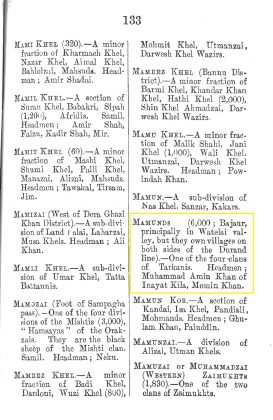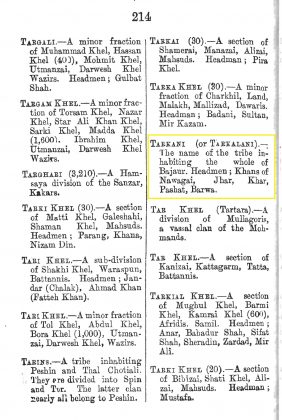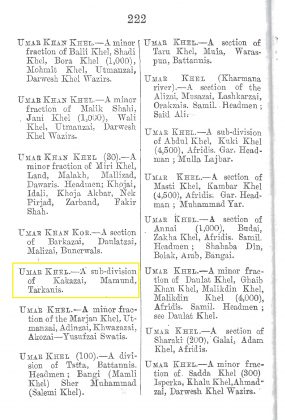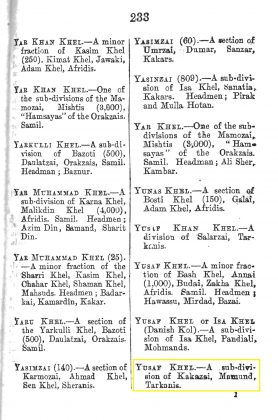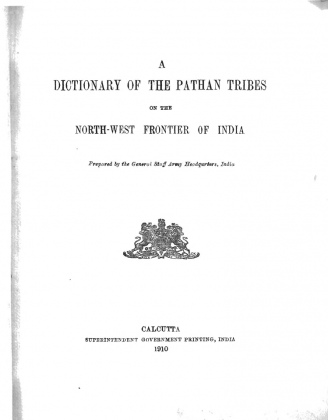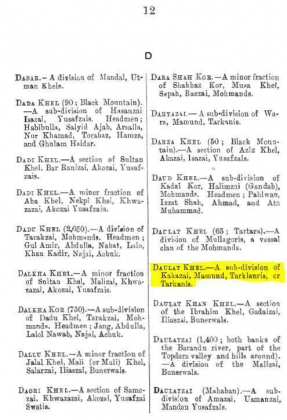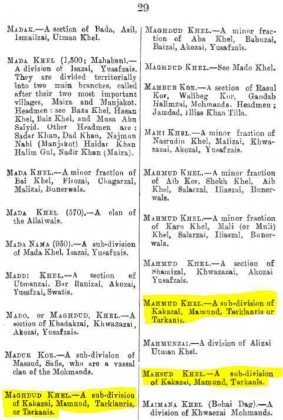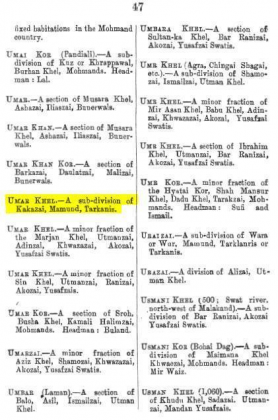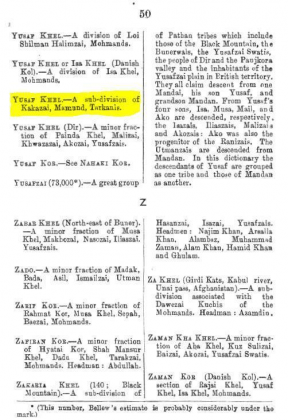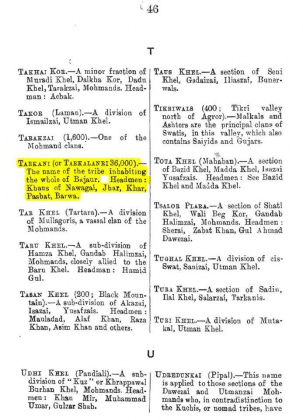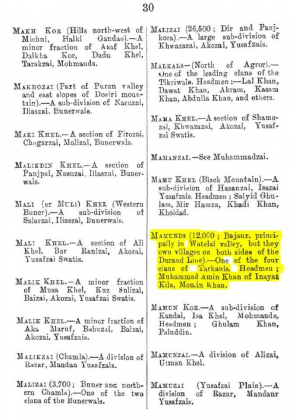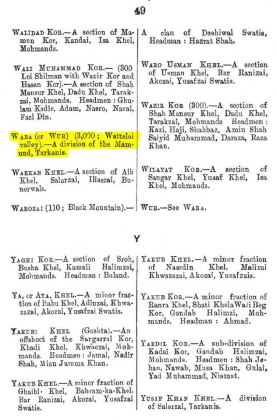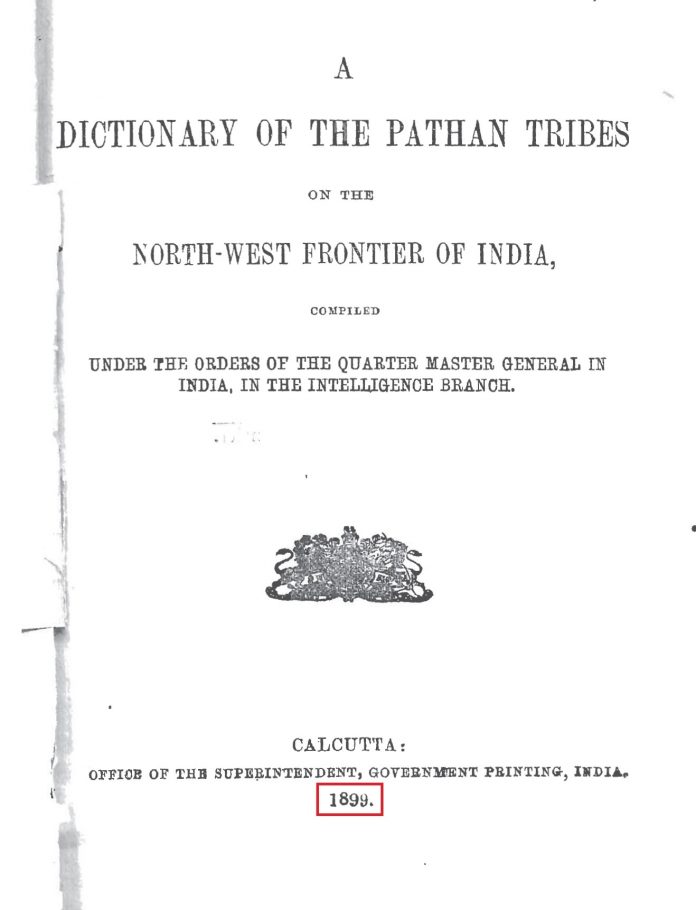
For the guidance of brothers and sisters living outside Khyber Pakhtunkhwa!
The Kakazai (Loi Mamund) Pashtuns are not Kakarzai (a subdivision of Kakar), nor are they and Kakarzai (a subdivision of Kakar) the same.
—-
The Kakazai (Pashto: کاکازي / ککےزي / ککازي, Urdu, Persian: کاکازَئی / کَکےزَئی / کَکازَئی), also known as Loi or Loye Mamund (Pashto: لوی ماموند; Urdu: لو ئے / لوئی مَاموند), a division of the Mamund clan, are part of the larger Tarkani (ترکاڼي) tribe, who are the descendants of Pashtun’s legendary ancestor, Qais Abul Rashid’s son, Sarban (سړبن / سڑبن), and primarily settled in Bajaur Agency, Pakistan but originally hailed from the Laghman province of Afghanistan. However, it has grown and scattered around to such an extent that it is recognized as a tribe of its own. The Kakazai (Loi Mamund) has the following subdivisions: Daulat Khel, Khulozai, Mahsud Khel, Maghdud Khel, Mahmud Khel, Umar Khel, and Yusaf Khel
—-
According to “Report on the Revised Land Revenue Settlement of the Rohtak District of the Hissar Division in the Punjab” – by W. E. Purser, Herbert Charles Fanshawe – Originally Published 1880, on Page 24, the Kakarzai is a sub-division of the Kakar (Pashto: کاکړ, Urdu, Persian: کاکڑ) tribe, who are the descendants of Gharghasht (غرغښت / غڑغشت), Qais Abdul Rashid’s son and a brother of Sarban (سړبن / سڑبن) and Bēṭ / Bettan (بېټن / بېټ), Qais Abdul Rashid’s other two sons, and based mostly in the Balochistan Province of Pakistan, and Loy Kandahar in Afghanistan.
According to “1911 Encyclopædia Britannica, Volume 15”, the Kakar is divided into many distinct tribes who have no connection beyond the common name of Kakar.
—-
According to the Library of Congress in the United States:
“Pathan is a British term for Pashtun (also seen as Pushtun and Pukhtun), the people who inhabited the region along the border between British India and Afghanistan. Today they constitute the largest ethnic group in Afghanistan and the second-largest in Pakistan. During much of the 19th and early 20th centuries, British India sought to control the Pathan areas in order to secure India’s northwestern border with Afghanistan. A Dictionary of the Pathan Tribes on the North-West Frontier of India was compiled by James Wolfe Murray (1853–1919), a British officer who was at the time an assistant quartermaster general in the intelligence branch in India. The book was published in Calcutta in 1899. The dictionary provides a detailed index of the Pathan tribes and their subdivisions. It does not include details on Pathan history or genealogy. The dictionary uses a hierarchical classification that starts with the tribe on top, followed by the clan, the division of the clan, the subdivision of the division, the section of the subdivision, and other minor fractions of the section. The entries are alphabetically ordered, from the lesser entity to the greater. The locality of the tribe, clan, or division is given in brackets. Some entries are also followed by figures in parentheses, indicating the number of fighting men in that division or fraction. The dictionary concludes with a note explaining the various spiritual titles and denominations used by the Pathans, and a color map showing the tribal boundaries.”
The confusion between Kakazai (Loi Mamund) and Kakarzai (a sub-division of Gharghashti Kakar tribe) was originated from “A Dictionary of the Pathan Tribes of the North West Frontier of India” – Published by The General Staff Army Headquarter – Calcutta, British India – Originally First Published in 1899, when James Wolfe Murray, a British Raj official and the compiler of the dictionary, published the entry of Kakazai as Kakarzai on Page 95 of dictionary’s first edition in 1899. He also missed publishing the details of Kakazai’s three sub-divisions: Daulat Khel, Mahmud Khel, and Maghdud Khel. He corrected all of his mistakes in the dictionary’s 1910 edition but the damage was already done. See the following gallery highlighting the difference between the two editions – Page 95 of 1899 edition and Page 22 of 1910 edition:
Following is the full comparison of the two editions, 1899 (with mistakes) and 1910 (Corrected one):
First edition (1899): “A Dictionary of the Pathan Tribes of the North West Frontier of India” – Published by The General Staff Army Headquarter – Calcutta, British India – Originally First Published in 1899 (First edition) – Published Kakazai as Kakarzai on Page 95 and missed Kakazai’s three sub-divisions: Daulat Khel, Mahmud Khel, and Maghdud Khel
Last edition (1910): “A Dictionary of the Pathan Tribes of the North West Frontier of India” – Published by The General Staff Army Headquarter – Calcutta, British India – Originally Published in 1910 (Last edition) – Published Kakazai correctly on Page 22 along with publishing all the Kakazai’s sub-divisions: Khalozai, Mahsud Khel, Umar Khel, Yusaf Khel as well as Daulat Khel, Mahmud Khel, and Maghdud Khel which it missed in its 1899 edition
This is just one of the examples of what the British Raj officials did to the reputation of the local nations, tribes, castes, and races hence a stern reminder to all of those researchers or readers out there who consider whatever the British wrote as the whole truth or set in the stone.
Both, the Kakazai (Loi Mamund) and Kakarzai (a sub-division of Kakar) are Pashtuns as the descendants of Pashtuns’ legendary ancestor, Qais Abdul Rashid. But the Kakazai (Loi Mamund) are the descendants of Qais Abdul Rashid’s son, Sarban, whereas Kakarzai is the descendant of his other son, Gharghast, therefore, they are two distinct tribes.
Thus, it suffices to say that the Kakazai (Loi Mamund) Pashtuns are not Kakarzai (a subdivision of Kakar), nor are they and Kakarzai (a subdivision of Kakar) the same.
© www.kakazai.com


